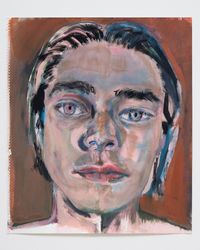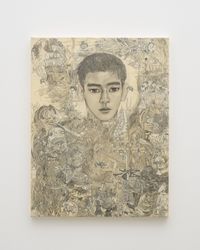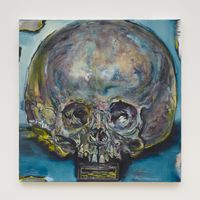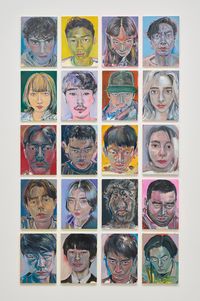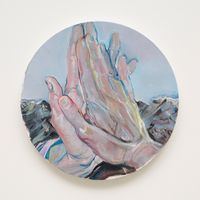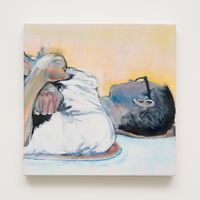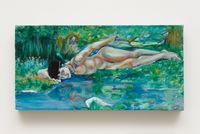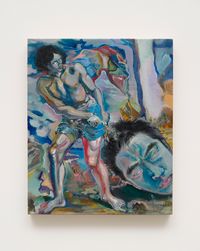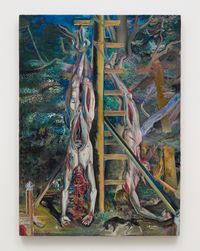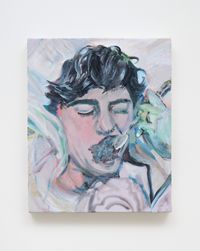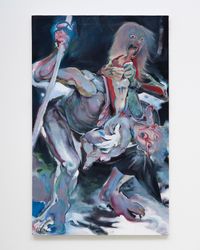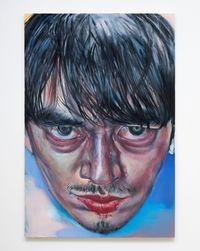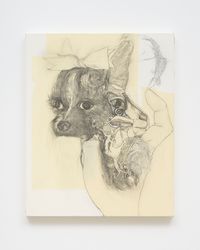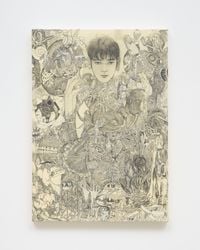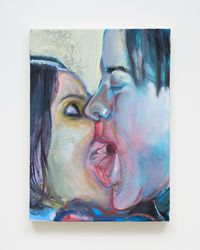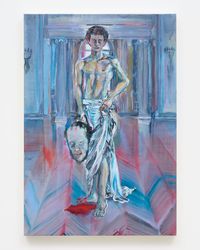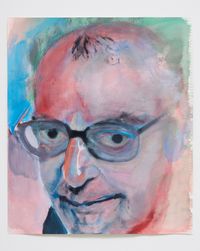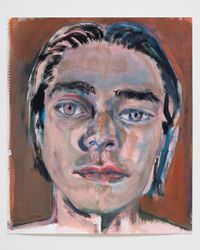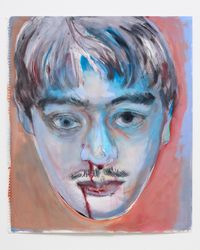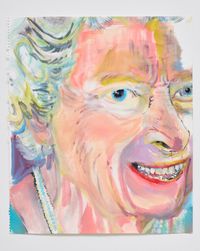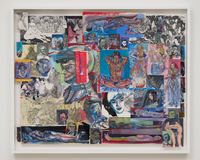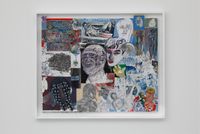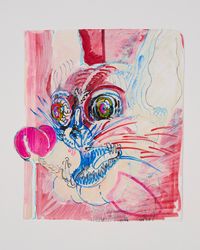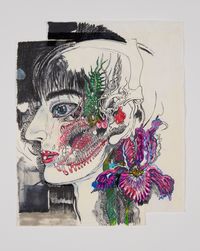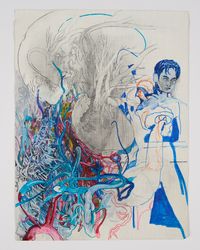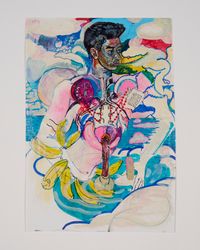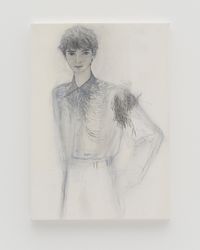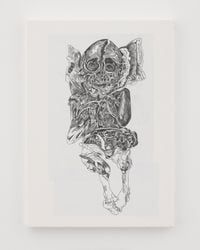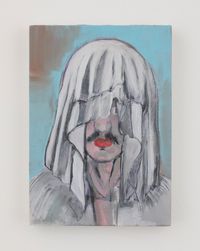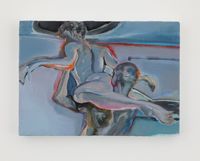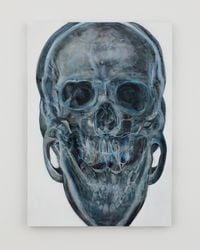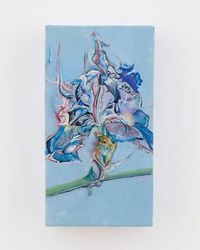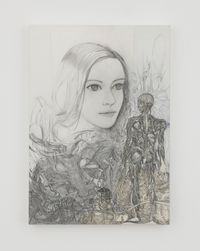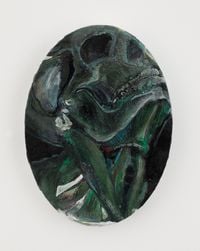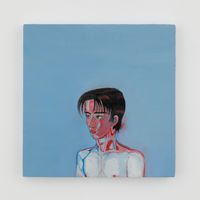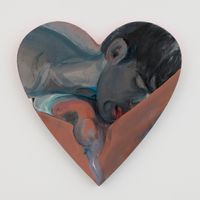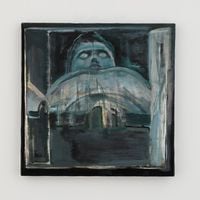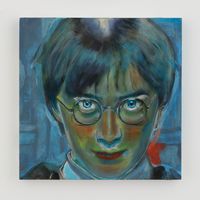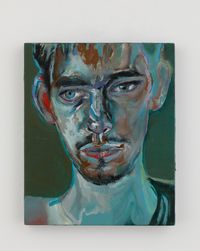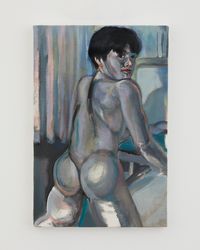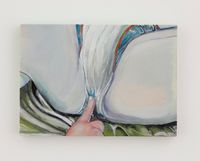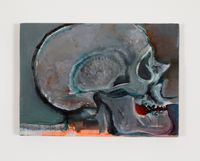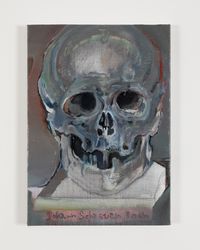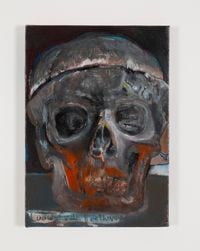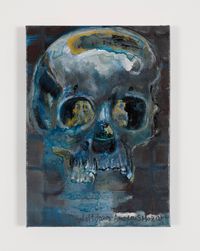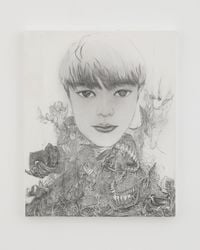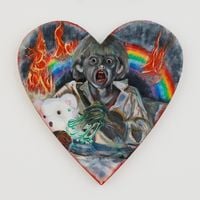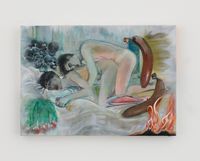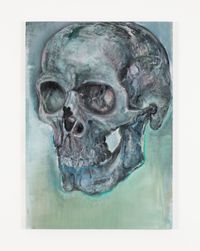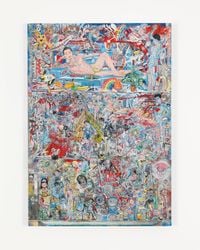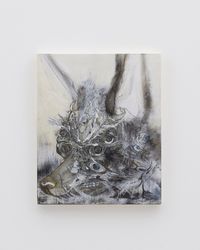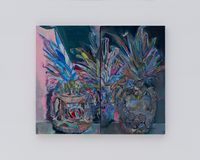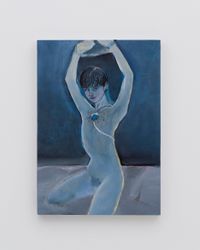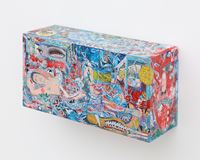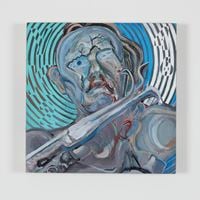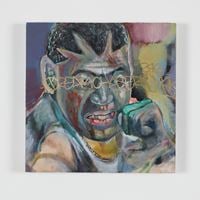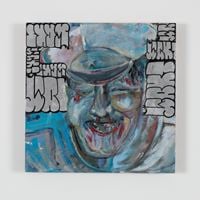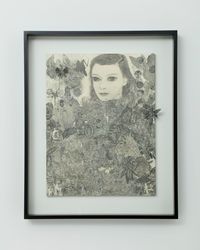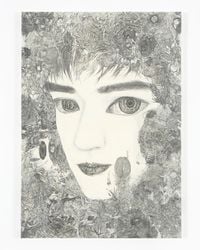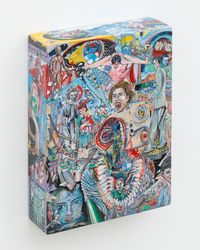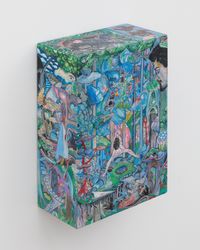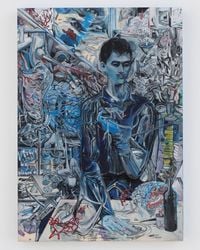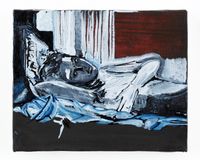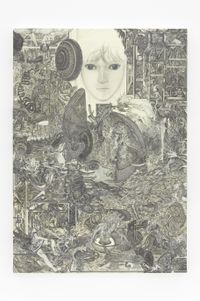Ataru Sato's works are marked by a sense of disconnection and alienation, with lone figures surrounded by entrails and bodies incorporated into faces on sombre-hued canvases.
Read MoreHighly detailed and fine-lined, Sato's pencil and ink drawings recover elements from nature and human anatomy to enquire into human existence and its significance.
Early monochrome drawings like First Love (2008) and Maybe Tonight (2012) show close-up portraits made from other bodies, faces, and diverse vegetation, always with eyes open, engaged in reflection or looking out to viewers.
Sato started painting at the age of 29 after learning that the surrealist figurative painter Michaël Borremans made the transition to painting at the age of 30. Painting allowed Sato to look at himself objectively, which complemented his introspective drawing practice.
Sato's signature colour scheme derives from his days as a student, when he could only afford red, blue, black, and white paints. The selection of colours stuck with the artist over the years, and are vaguely reminiscent of the anatomy books he read as a child, in which organs are highlighted in the same shades.
The same blend of colours can be seen in Untitled breakfast (2018), where a lone figure stands at a table, surrounded by surgical instruments and entangled in a network of red and blue veins, connoting displeasure. A brain rests on the surface in front of him, beside a bottle of wine.
Sato's interest in death hints at an equal desire for life. Painted in isolation, macabre reflections take shape across the canvas, peering from one realm into the other.
In self-portrait Rain (2019), a young man is lying on the ground with open eyes, a crimson stream cascading from his nose. The painting was rendered after an experience in the artist's life, following a nosebleed left unattended on a rainy day.
'I want to connect with others in person, but I also notice it is not easy to associate with people,' the artist notes. The same sense of alienation returns in his day to day, explored across stark compositions that deconstruct the human figure.
Over the rainbow (2019), a mixed-media assemblage on a wooden box, shows two interlaced bodies against an entangled mesh of eyeball-pinching fingers, legs emerging from bright red lips, and brightly coloured mutant plantation—the entirety covered in a yellow and pink web.
